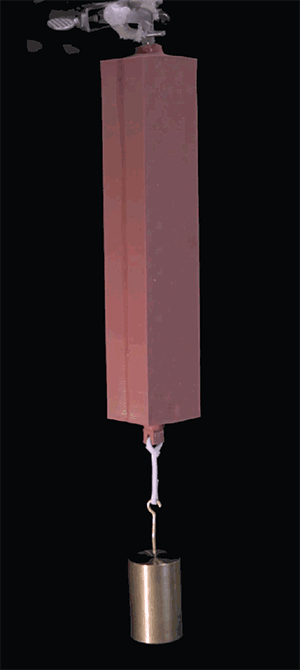"Functionally, our actuator models the human bicep muscle," explained George Whitesides, team leader and director of the Kavli Institute for Bionano Science and Technology at Harvard University. "There are other soft actuators that have been developed, but this one is most similar to muscle in terms of response time and efficiency."

Whitesides' team took an unconventional approach to its design, relying on vacuum to decrease the actuator's volume and cause it to buckle. While conventional engineering would consider bucking to be a mechanical instability and a point of failure, in this case the team leveraged this instability to develop VAMPs (vacuum-actuated muscle-inspired pneumatic structures). Whereas previous soft actuators rely on pressurised systems that expand in volume, VAMPs mimic true muscle because they contract, suiting them for use in confined spaces and for a variety of purposes.
The actuator - comprising soft rubber or 'elastomeric' beams - is filled with small, hollow chambers of air like a honeycomb. By applying vacuum, the chambers collapse and the entire actuator contracts, generating movement. The internal honeycomb structure can be custom tailored to enable linear, twisting, bending, or combinatorial motions.
Although a complex control system has not yet been developed for VAMPs, this type of actuation is claimed to be easy to control due to its simplicity: when vacuum is applied, VAMPs will contract. It could be used as part of a tethered or untethered system depending on environmental or performance needs. Additionally, VAMPs is designed to prevent failure - even when damaged with a 2mm hole, the team showed that VAMPs will still function. Whereas other actuators powered by electricity or combustion could cause damage to humans or their surroundings, loss of vacuum pressure in VAMPs would simply render the actuator motionless.
The team envisions that robots built with VAMPs could make industrial production lines safer, faster, and quality control easier to manage by enabling human operators to work in the same space.











